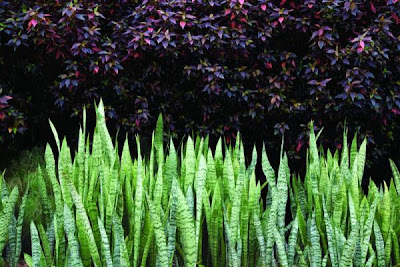A member of the daisy family, Artemisia constitutes a large and diverse group of plants including mugwort, wormwood, and sagebrush. What they all have in common is a culture of hardiness, drought tolerance, a hunger for sunlight, and well-drained soil. What makes the plants special are their powerful essential oils and camphor-spice aroma, an adaptation to discourage animal foragers. It is from these oils that we get Absinthe, vermouth, Polish vodka, tarragon, and the compound artemisinin which is used in treating malaria, intestinal parasites, repelling fleas and moths, and more recently has shown promise in treating cancers and leukemia.
Beyond the industrial uses, many species of Artemisia are used as ornamentals including Powis Castle, Silver Mound (resistant to deer, attractive to bees, butterflies, and birds), Silver Brocade (compact, does well as a container filler), Silver King (white sage, also used in flower arrangements), David's Choice (native to No. California beaches), arborescens (fast growing, dense, essential oil with skin care applications), and dracunculus (tarragon).
Powis Castle, seen above, has been called "the gardener's dream plant" and "insanely drought-tolerant once established" making it an excellent choice for dry gardens. It's light color, cloud-like shape, and lacey texture make it an excellent choice for creating contrast and interest. It reaches heights of three feet, mounds well, and is well-suited for layering.
Below, Artemisia arborescens (meaning woody or tree-like): Native to the Mediterranean, this Artemisia is also hardy and drought-tolerant making it a great garden companion of the highest magnitude as well as a color and texture modulator. It's particularly well-suited for modern designs.
Below, Artemisia Silver Mound: Its foliage is described as "aromatic... finely textured with silky pubescence." An interesting word pubescence, in botany it refers to the soft down or fine short hairs on leaves and stems.
Not all varieties of the plant are gray or silver in color, like the wan green of Powis Castle above and below. The plant is believed to have originated in the gardens of Powis Castle in Wales in 1972 as a hybrid of A. arboescens and A. absinthium. Once introduced into the gardening world its popularity soon took it by storm (it's also thought that a cutting was sneaked from the grounds and taken to the market by a cunning entrepreneur).











































































































































